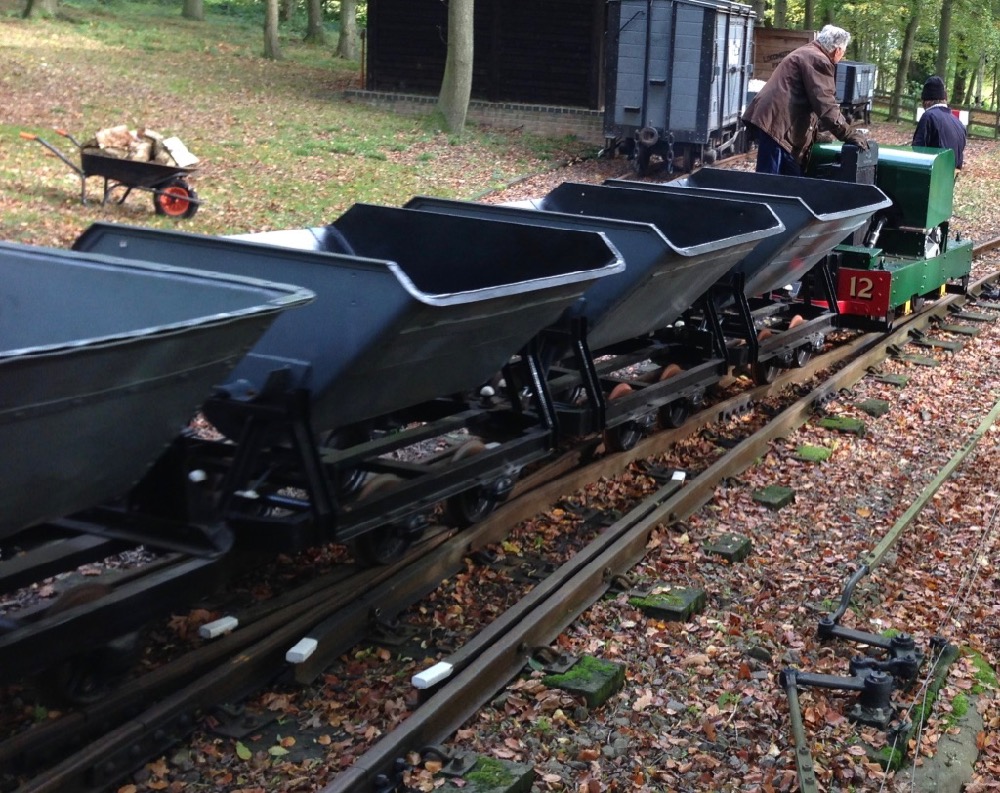No. 2 - Ex MoD Powder Van
This van retains the unusual feature of ex MoD Powder Vans in that it has sliding roof hatches and the transoms over the doors are removable to allow loading via crane or forklift.
In order to prevent sparks the body is cross-planked in oak (outside) and teak (inside), all interior coach bolts are recessed and covered with wooden plugs.
Door clasps, cotters, hatch rollers, etc. are in brass.
The docket clip does not have the backing plate that the flat wagons have.
No. 2 is used as the permanent way team maintenance wagon.
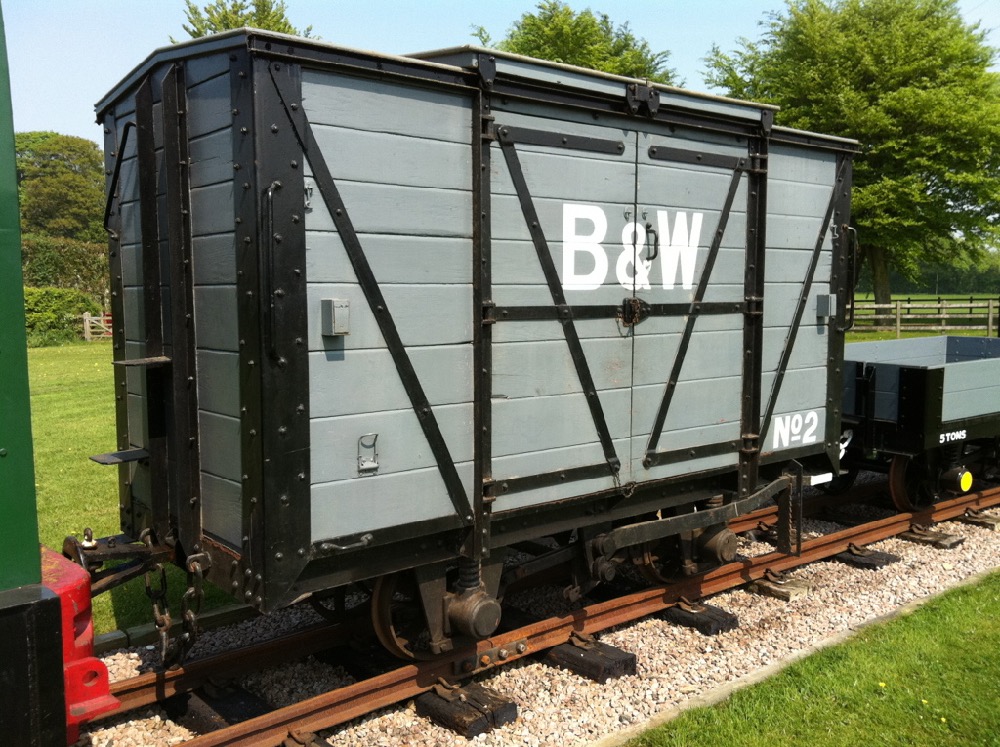
No. 3 - Lenham Storage 2 plank
The long Flat Wagon is in fact a cut down van and had already been modified before arriving at the BWLR.
Sign written as Lenham Storage and used on demonstration goods trains,
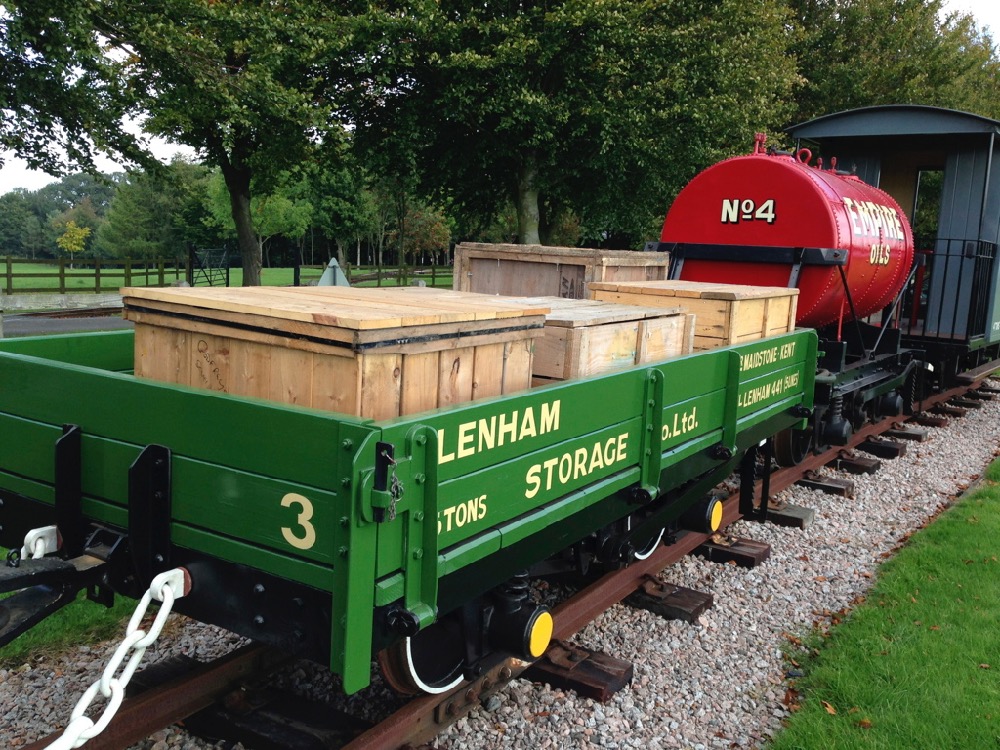
No. 4 - Empire Oils Tank Wagon
Painted in the bright red livery of Empire Oils this wagon was constructed on a MoD underframe.
The original end stanchions were cut and re-welded to suit a tank obtained from a farm sale.
This has two compartments separated by a bulkhead, each with a filling hatch and the remains of the delivery valve.
The tank had originally been mounted on a flat bed lorry and used for the delivery of household paraffin and lamp oil.
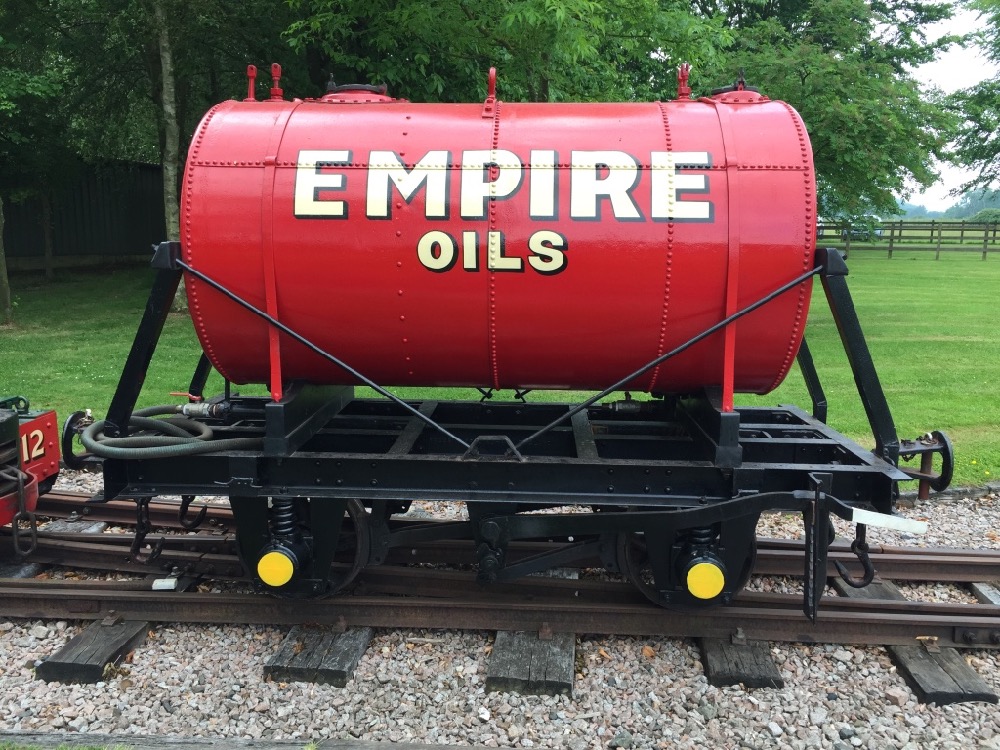
No. 5 - Crown Quay 4 plank
No. 5 is a 4 plank open wagon based on a design used by the Lynton & Barnstaple Railway.
They are typical of the classic British open wagon used for carrying coal and general merchandise.
This one is sign written as Crown Quay and has been fitted with bench seats for passenger duties on open days.
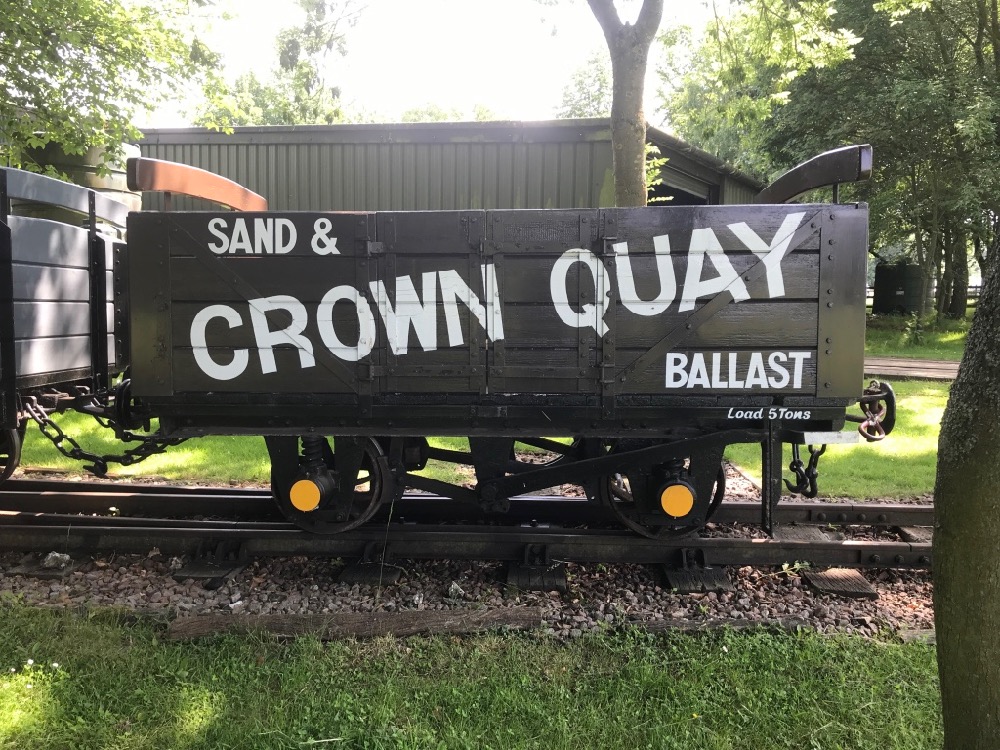
No. 6 - 4 plank
No. 6 is a 4 plank open wagon based on a design used by the Lynton & Barnstaple Railway.
They are typical of the classic British open wagon used for carrying coal and general merchandise.
This one has been fitted with bench seats for passenger duties on open days.
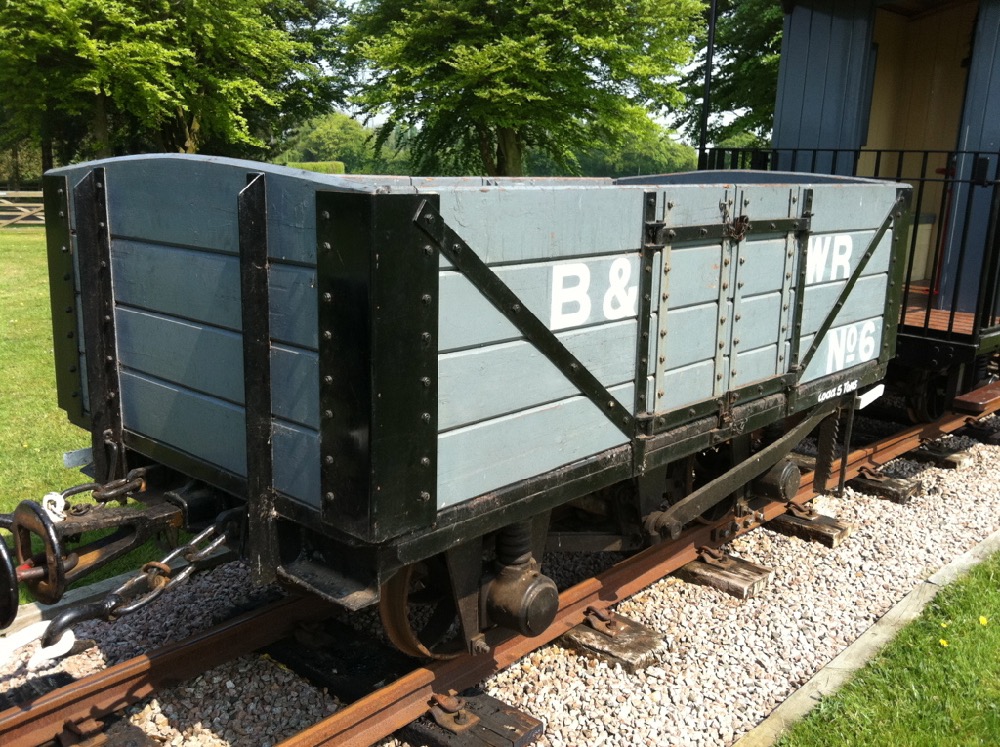
No. 7 - 2 plank Ballast Wagon
No. 7 is a purpose built two plank ballast wagon with end loading doors.
It has been fitted with a metal plated floor to make shovelling the tons of ballast used on the railway a little easier.
This wagon forms part of the permanent way team maintenance train.
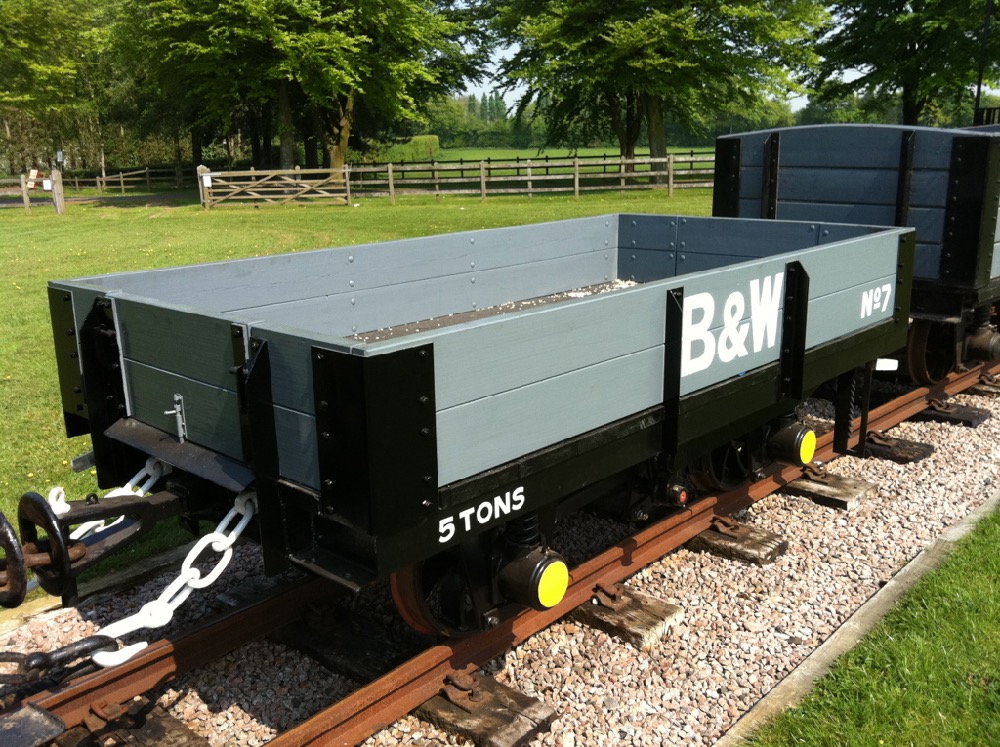
No. 8 - Flat Wagon
No. 8 is a long Flat Wagon created from a cut down van and had already been modified before arriving at the BWLR.
It is normally loaded with a crate of locomotive spares for export from John Fowler's factory in Leeds.
Sometimes it is used for more important things when track maintenance is required.
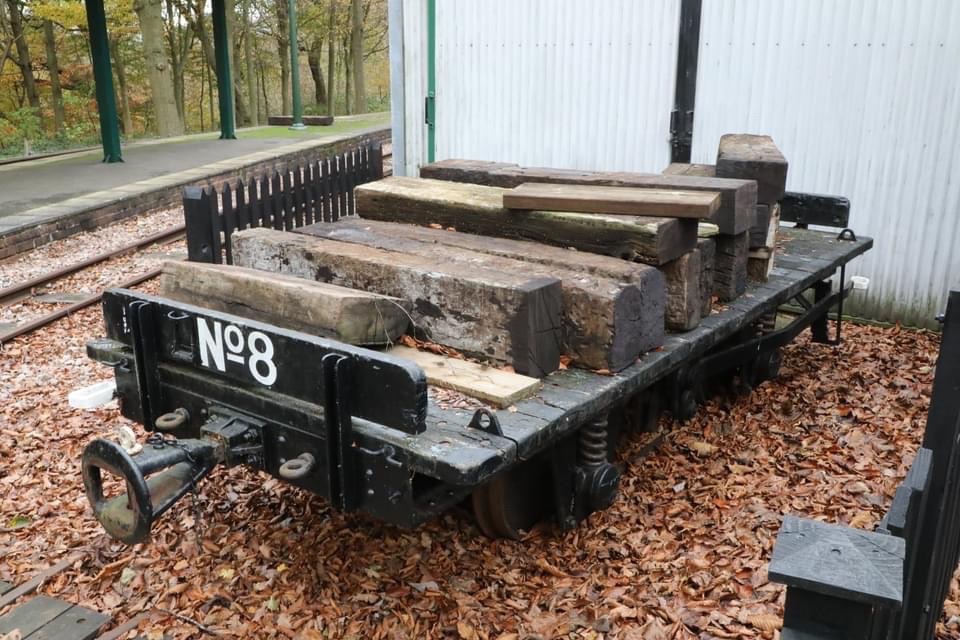
No. 10 - Brake Van
In past times goods trains did not have powered brakes, so a special brake wagon was attached to the rear of the train.
In this vehicle the guard rode and when whistled by the driver he applied his handbrake to help stop the train.
The chassis for this van was donated to the BWLR by a friend of the railway.
It arrived at the BWLR towards the end of October 2005 in a rusty and dilapidated state.
Its origin is unknown but it is believed to be ex MoD and very similar to our other goods stock chassis.
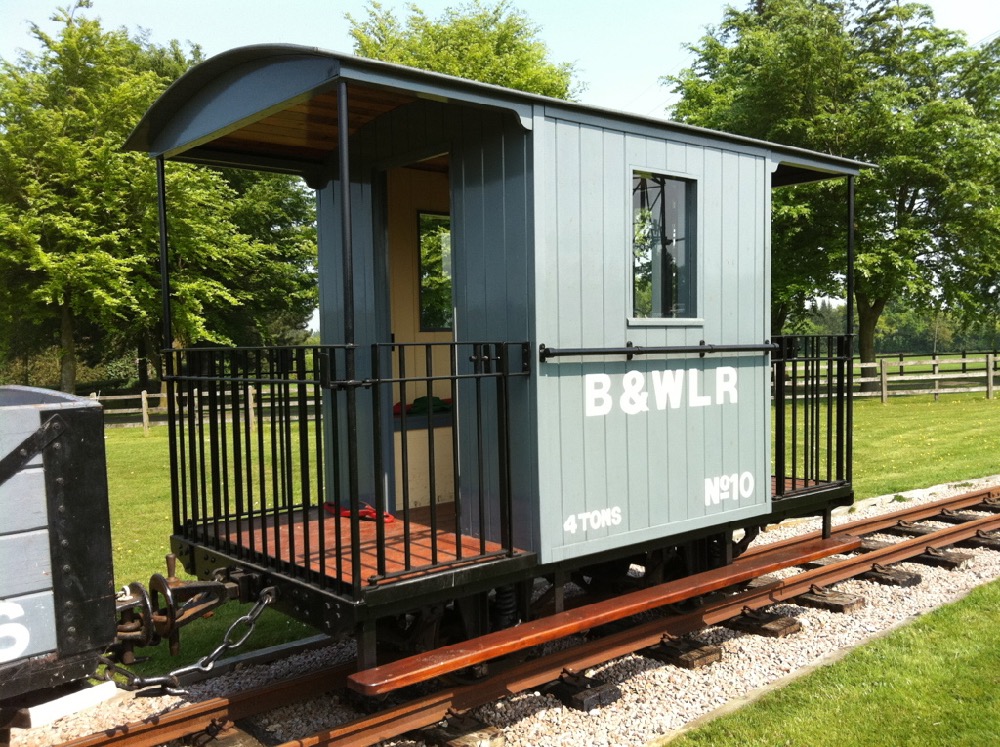
Rail Mounted Victorian Yard Crane
This is a fine example of a 1890’s manual yard crane, we think it was originally built to work in a wood yard or small factory. At some point in its life it was converted to road use with metal tyres on its flanged wheels and one axle made into a steerable bogie. The rail chassis had wheels and axles but these were not of any normal gauge. It is a typical example of the small hand powered cranes used in Victorian times for loading/unloading goods from road or rail vehicles. On the right hand end of the crane you can see a black box mounted on small wheels, this was used to counter balance any load on the hook to stop the crane turning over.
It was found in a sad state at Woburn Sands, Milton Keynes where it had been lying amongst the brambles having been saved from the scrapman 35 years earlier and used as a garden ornament.
It came to BWLR in March 2001 and completely restored, the metal tyres were removed and it has been regauged to 2 foot. All work was completed for our May 2001 Open Day.
The wheels and axle were adapted to fit our two foot gauge line.
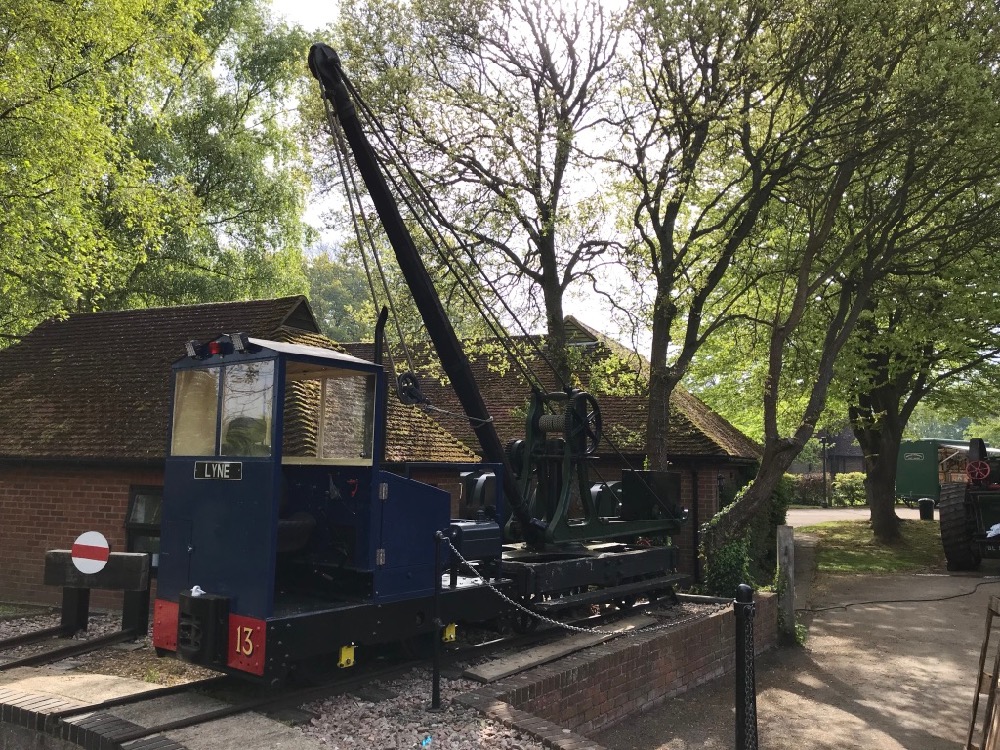
Skip Wagons
These little wagons carry one cubic yard of material and could be found working in numerous quarries and mines.
Tippers like this would often be hauled by Simplex locomotives.
The railway has four similar tippers.
